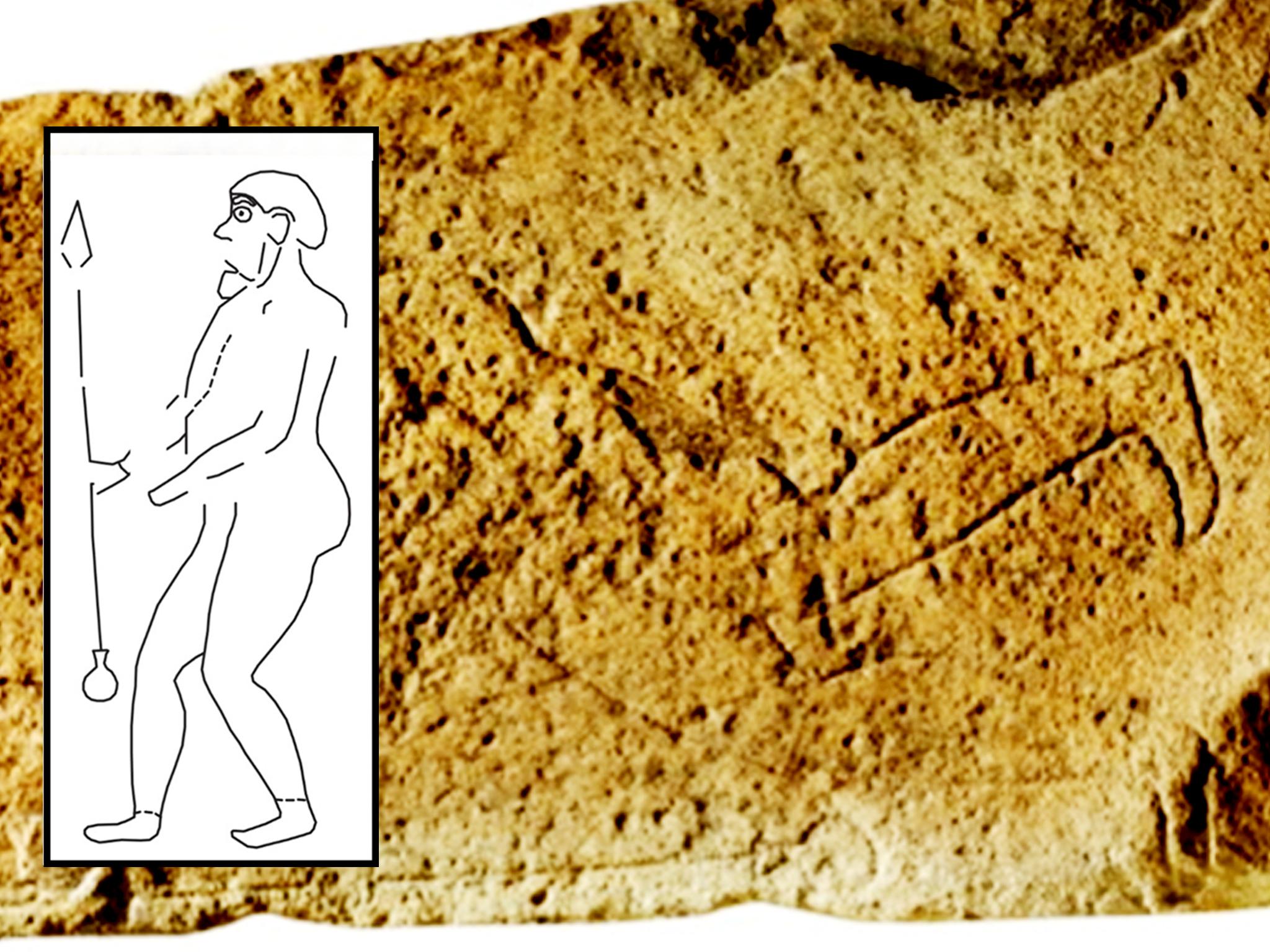Secrets of ancient warrior society revealed after stone found during roadworks
Monolith may be sacred icon from elite Pictish cemetery

Your support helps us to tell the story
From reproductive rights to climate change to Big Tech, The Independent is on the ground when the story is developing. Whether it's investigating the financials of Elon Musk's pro-Trump PAC or producing our latest documentary, 'The A Word', which shines a light on the American women fighting for reproductive rights, we know how important it is to parse out the facts from the messaging.
At such a critical moment in US history, we need reporters on the ground. Your donation allows us to keep sending journalists to speak to both sides of the story.
The Independent is trusted by Americans across the entire political spectrum. And unlike many other quality news outlets, we choose not to lock Americans out of our reporting and analysis with paywalls. We believe quality journalism should be available to everyone, paid for by those who can afford it.
Your support makes all the difference.A Pictish stone discovered by road workers has helped archaeologists shed light on Scotland's ancient warriors.
The monolith, nearly two metres tall, depicts a male figure carrying a spear and was found during ground clearance work for the A9 and A85 in Perth.
Archaeologists have spent months clarifying and analysing images and believe it could be a sacred icon from a “cemetery of the elite” in Pictish times.
Researchers said the “significant find”, named the Tulloch Stone, could indicate the existence of a warrior-led society, key to repelling the invading Romans.
When the stone was found near McDiarmid Park in 2017, the outline of the figure could be seen but the carving was faint in places and the surface damaged.
University of Aberdeen archaeologists created 3D images from thousands of photographs, clarifying the design to enable comparison with other ancient monoliths.
The university's head of archaeology, professor Gordon Noble, said: “On the Tulloch Stone we can now see that the man is carrying a distinctive doorknob-butted spear, which we know from previous research was in use from the third to the sixth century.
“He also has a very distinctive hairstyle, is wearing a helmet and necklace, and has a faint line around the left ankle which could suggest footwear or tight leggings.
“In line with the other stones, this is clearly a depiction of a warrior.”
He added: “Its find spot overlooks the coming together of the rivers Tay and Almond, a junction marked by a Roman fort and later a possible Pictish royal centre, suggesting the monolith might have been located in a cemetery of the elite.
“Because the presentation of the figures is standardised across all of the stones, it is likely that it represents a generic sacred image, rather than it being a depiction of someone buried there.”
He said the find “bridges a crucial gap in knowledge”, adding: “We believe that the weapon-bearing individuals shown on these stones may represent a war-oriented social organisation that was integral to resisting the Roman Empire and to creating the overtly hierarchical societies of the post-Roman period.”
Mark Hall, archaeological curator at Perth Museum, praised the workers who made the discovery.
He said: “The workmen who scooped up this stone did well to realise that there was something on it and to alert the appropriate authorities.”
Mr Hall said it indicates the existence of a warlord or warrior ethos for which there was previously little evidence in Scotland.
He said: “In Anglo-Saxon England, we have lots of examples of burials with weaponry and the poem Beowulf epitomises the warrior ethos of this period.
“This has not been evidenced in Scotland in the same way but here through the new Tulloch find and a reconsideration of long-known stones we can see that warrior ideology cast in stone - meaning these martial values were conveyed in a very public way to be visible in the landscape and to invoke supernatural protection.”
The research team's report was published in the journal Antiquity.
Press Association
Join our commenting forum
Join thought-provoking conversations, follow other Independent readers and see their replies
Comments